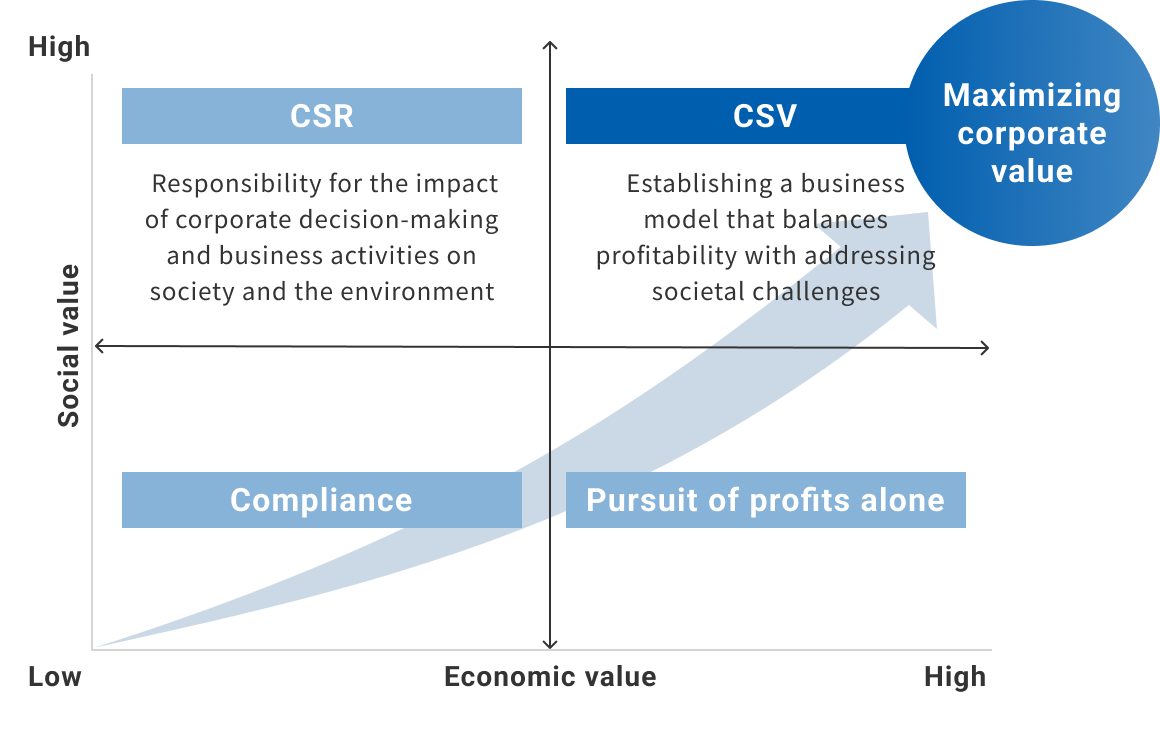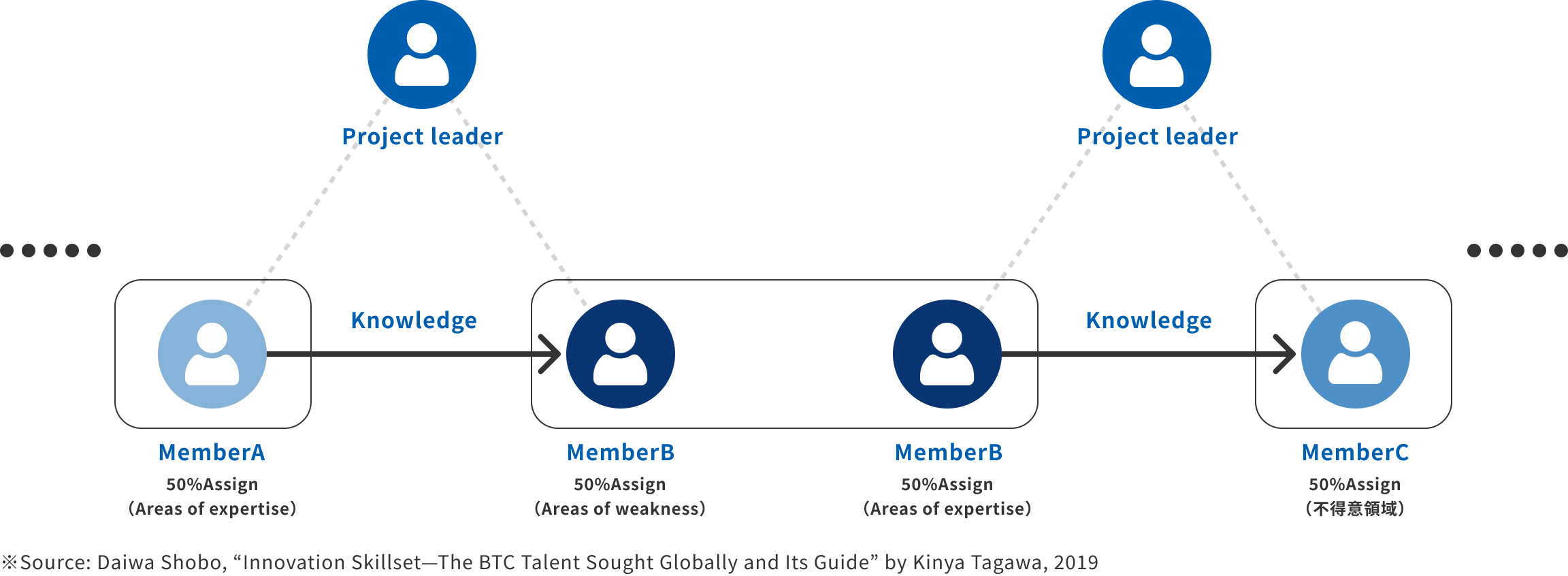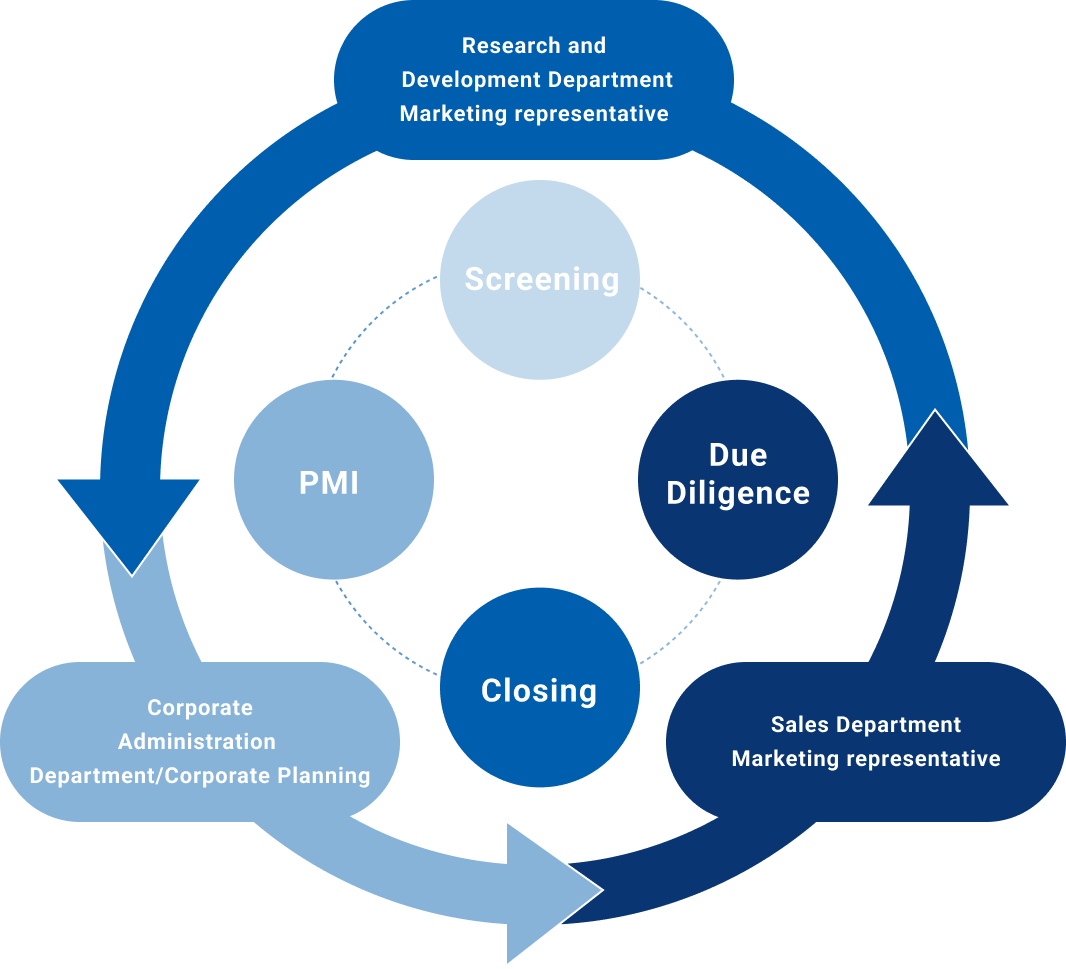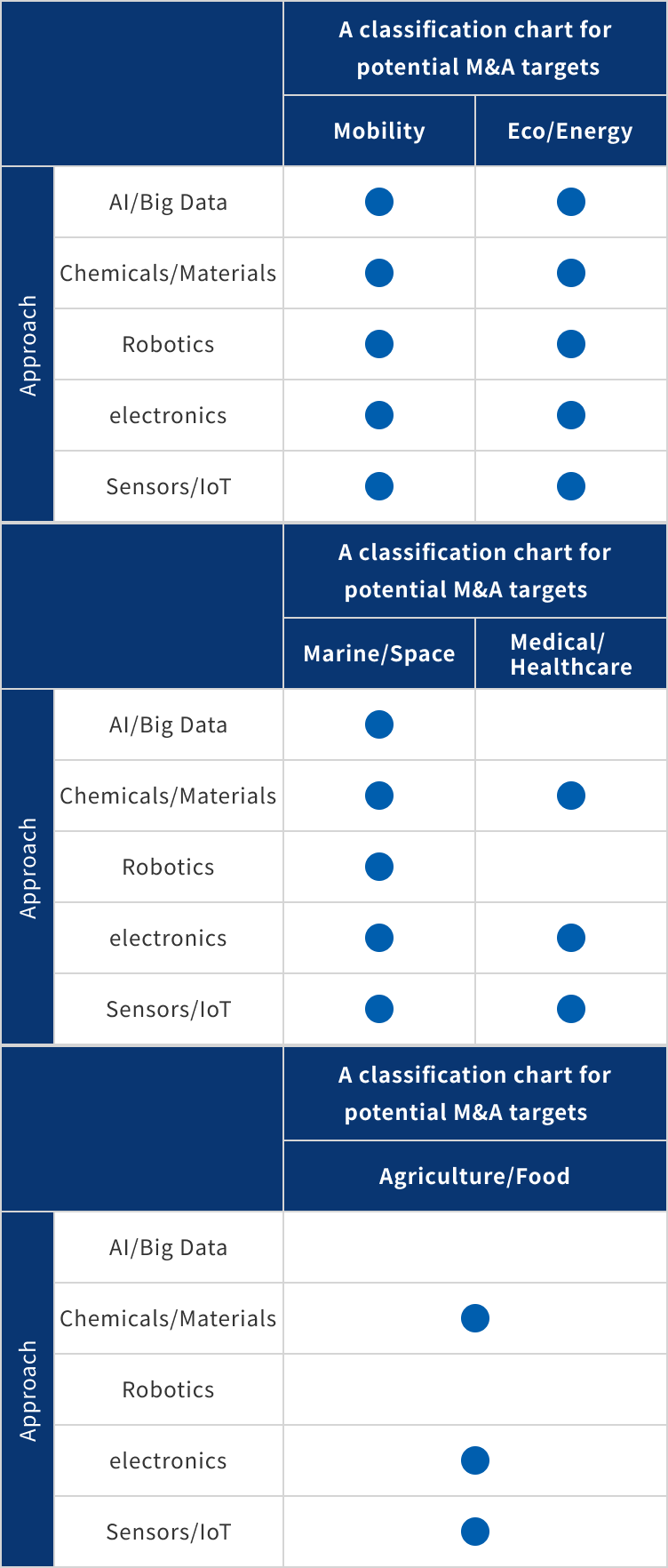
Marktec Group’s Management Direction
- Aiming to be an ecosystem of Good Companies (MBS: MARKTEC Business System) rather than Big Companies
- CSV Management: Establishing a business model that balances profitability with addressing societal challenges.
- We aim to realize a unique business framework: “(A) Human resource development for the next generation of CEOs × (B) Succession of small and medium-sized enterprises that have outstanding technologies and profitability related to quality assurance but are on the verge of going out of business due to lack of successors = Business Ecosystem of Good Companies”
MBS: Overview of MARKTEC Business System
- The goal of the MBS is “to become a source of creativity that promotes quality assurance and the solution of social problems”.
- Four pillars of the MBS: ① Fundamental, ② Lean (Kaizen), ③ Growth, and ④ Leadership
- The concept of is MBS is “Collective” → Ecosystem driven by Good Companies
Fundamental (9 KPIs)
Shareholder relations/financial standards
- Growth of core business
- Improvement of operating profit margin/Increase in operating profit
- Increase in working capital (WC)
- Improvement of return on invested capital (ROIC)
Customer response criteria
- Q:Quality
- C:Cost
- D:Delivery
Employee response criteria
- Internal replenishment rate
- Internal replacement manager ratio
- Retention rate
- Career advancement evaluation system
- Performance-linked compensation
Lean(Kaizen)・Growth・Leadership
Lean(Kaizen)
- Promoting continuous improvement of operations in terms of safety, reliability, quality, service, SCM, and costs
- R&D process
- Manufacturing design review/process and workload management
- Production planning/inventory/logistics/purchasing
- QMS/4M changes/QC activities
- Complaints, defects, issues, correction analysis, etc.
Employee response criteria
- Develop (R&D area)
- Reducing development lead time/Maximizing R&D returns
- Dream (Sales&Marketing area)
- Creating ideas from customer insights
- Strengthening marketing
- Deliver
- Strengthening MBS functions to accelerate growth/Accelerating M&A
Employee response criteria
Basic principles of human resource development
- Positiveness: perseverance/decisiveness/self-reflection
- Professionality: expertise/personal philosophy
- Performance: commitment/ability to realize
- Personality: interpersonal skills/dialogue skills/empathy, etc.
Collective
- Spirit of partnership
- Equal positioning of affiliated companies
- Demonstrating expertise and innovation to the fullest extent.
- Promoting collaboration among companies within the collective
- Creating businesses within a larger framework
- Maintaining and fostering entrepreneurial spirit through collaboration
- Respecting the different DNA of the group
- Spontaneous collaboration between member companies and individuals
- Maintaining/fostering entrepreneurial spirit
- Advancing initiatives with greater impact
Leadership: empowering and revitalizing employees
MARKTEC Group’s basic principles of human resource development
- The foundation of the MARKTEC Group’s business is its employees, and we believe that employee growth is what leads to the growth of the company and contributions to society.
- Employees of the MARKTEC Group must respect one another and strive for self-improvement as they work towards ambitious goals.
- MARKTEC Group provides all employees with opportunities to develop and demonstrate their abilities
- The higher the position and level of responsibility of an employee of the MARKTEC Group, the more the following qualities and abilities are required in addition to specialized knowledge, skills, and work experience
- The ability to communicate effectively with others, inspire them, and nurture their development
- Reliability: In other words, “your actions match your words”
- The ability to willingly embrace change and effectively adapt to it
- Courage, composure, ability to handle stress
- Ability to learn, flexibility, insight
- Ability to create an environment that encourages innovation
- Ability to think in context
- Experience living/working abroad and understanding of other cultures
Moreover, a broad range of interests, excellent general knowledge, a responsible attitude and actions, as well as physical and mental health.
Knowledge chain to develop cross-border talent

Time allocation for members
Areas of weakness
50%Assign
Acquiring new skills, steep learning curves, significant stress, the role of a learner, and gratitude
Areas of expertise
50%Assign
A gradual learning curve as a professional, minimal stress, the role of a mentor, and making meaningful contributions
Members are assigned tasks with a 50% focus on their areas of expertise and 50% on their areas of weakness.
A knowledge chain is a system that enables the seamless and automatic dissemination of knowledge and expertise within an organization.
Diversification strategy
Promoting the transfer of technology in the field of quality assurance
- We’ve identified diversification as a cornerstone of our corporate strategy, rallying the entire company behind this initiative to drive sustained mid- to long-term growth for our group
- SSDG’s Goal 12, “Ensure sustainable consumption and production patterns,” emphasizes key concepts such as the circular economy and the principles of ① Reduce, ② Reuse, and ③ Recycle
Expanding business areas to scientifically enhance quality assurance
- Maintenance
- Repair
- Overhaul
- Measuring and
Recycling Oriented

Rapidly accelerating the PDCA cycle at each stage of the process
Promoting the transfer of technology through the advancement of M&A initiatives
- Continuously implementing M&A strategies aimed at expanding business areas to scientifically enhance quality assurance [Supplementary Information]
- The key attributes of target companies for technology transfer are: ① Quality Assurance, ② Niche and Profitability, and ③ Technology. Additionally, key decision-making factors for M&A include: ① Whether the company operates in a growth industry, ② Whether it already has competitive strength, ③ Whether there is room for improvement, ④ Whether there is compatibility in corporate culture, and ⑤ Whether its customer base is not overly reliant on a single client.
Keywords of companies subject to technology succession
![]()
Quality
Assurance
![]()
Niche & Profitability
![]()
Technology
Further advancing cross-functional knowledge management on a global scale
[Supplementary Information] The diversification strategy within Ansoff’s Growth Vector Matrix, namely the creation of businesses/products as well as markets/customers, constitutes the domain of business innovation.
A classification chart for potential M&A targets


M&A Capabilities and Target Selection
- The most important criterion for M&A is whether the acquisition will ultimately enable the company to become one of the market leaders in its product domain
- Two key questions: ① What kind of game are we planning to play? ② How can we win in that game?
Market Selection
Ideal Target Market
- Large market size, growing market
- minimal economic fluctuations
- minimal economic fluctuations
- ability to enhance sustainable competitive advantage through brands and intellectual property, high profit margins
- low capital intensity
Company Selection
Ideal Target Company
- Possesses numerous brands and intellectual property
- High product pricing power. High gross margin (GM) and low operating profit margin (OPM)
- MBS: Significant room for improvement through the introduction of the MARKTEC Business System
Existing markets/Existing
technology

Existing markets/New
technology

New markets/Existing
technology

New markets/New
technology

*In the MARKTEC Group’s marketing process, market information and technical information will be incorporated into the respective table

